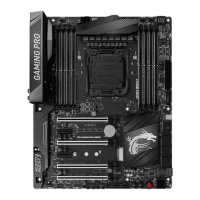
Do you have a question about the MSI X99A GAMING PRO CARBON and is the answer not in the manual?
| Brand | MSI |
|---|---|
| Model | X99A GAMING PRO CARBON |
| Category | Motherboard |
| Language | English |
Lists necessary tools and components for system assembly, including CPU, fan, and memory.
Step-by-step guide for installing the CPU onto the motherboard socket.
Instructions for correctly inserting DDR4 memory modules into the DIMM slots.
Diagram and pinout for connecting front panel case connectors to the motherboard.
Guide on how to properly mount and secure the motherboard inside the computer case.
Steps for connecting SATA drives (SSD/HDD) and their power cables.
Instructions for installing a graphics card into the PCIe slot.
Illustrates connecting common peripherals like keyboard, mouse, and speakers.
Details on connecting the ATX main power and CPU power connectors.
Steps to safely power on the computer after assembly.
Details on CPU support, chipset, DDR4 memory features, and PCIe slot configurations.
Information on multi-GPU support, USB port types, storage interfaces, and audio codec.
Details on LAN controller, rear I/O ports, internal headers, and I/O controller chip.
Specifications for hardware monitoring, motherboard form factor, and BIOS features.
List of supported software utilities and performance gaming features.
Overview of MSI specific technologies and key specification highlights.
Details on LAN port LED indicators and audio port connections.
Guide to the Realtek HD Audio Manager software for audio settings.
Details on the LGA 2011-3 CPU socket and installation guidelines.
Diagrams and recommendations for installing DDR4 memory modules in DIMM slots.
Information on PCIe slots, bandwidth tables, and SLI graphics card installation.
Details on SATA 6Gb/s, SATAe connectors, and M.2 slot features.
Guide to U.2 connector, installation, and storage combination tables.
Explanation of the GAME BOOST knob and the TPM module connector.
Details on power connectors, front panel headers, and USB 3.1 Gen1 connectors.
Information on USB Type-C, RGB LED, and fan connectors.
Details on audio, chassis intrusion, and multi-BIOS switch components.
Explanation of power/reset buttons, Clear CMOS jumper, and booting jumpers.
Guide to LED status indicators and debug code meanings for system diagnostics.
Methods to access BIOS setup and a guide to BIOS function keys.
Procedures for resetting BIOS to defaults and updating BIOS via M-FLASH or Live Update.
Introduction to the EZ Mode BIOS interface for basic system information and settings.
Introduction to the Advanced Mode BIOS interface for detailed system configuration.
Details on system status, advanced settings, peripherals, and OS configuration.
Options for saving changes, discarding changes, and exiting the BIOS setup.
Comprehensive settings for CPU and DRAM overclocking, including ratios and voltages.
Features for managing, saving, and loading overclocking profiles.
Information on monitoring system temperatures, fan speeds, and voltages within BIOS.
Guides for installing the operating system, drivers, and utility software.
Overview of COMMAND CENTER for system adjustment and monitoring under OS.
Guide to LIVE UPDATE 6 for automatically downloading drivers and BIOS.
Details on GAMING APP for controlling system performance and gaming features.
Explanation of M-CLOUD for network sharing and turning the PC into a Wi-Fi AP.
Information on RAMDISK for creating a virtual RAM drive for faster storage.
Guide to USB SPEED UP for enhancing USB storage device transfer rates.
Details on GAMING LAN MANAGER for traffic shaping and network optimization.
Guide to Nahimic 2 for enhanced audio experience, effects, and settings.
Instructions for XSplit Gamecaster V2 for gameplay recording and live streaming.
Overview of Intel XTU for overclocking, tuning, testing, and monitoring the system.
Explanation of RAID levels and how to set up Intel Rapid Storage Technology.
Step-by-step guide for creating and managing RAID volumes.
Procedures for deleting RAID volumes and resetting disks to non-RAID.
Information on degraded RAID arrays and procedures for failed hard drive members.
Solutions for problems related to power not turning on or no display signal.
Troubleshooting steps for BIOS, audio, network, and USB device problems.
Statements regarding compliance with FCC, CE, and C-Tick regulations.
Information on battery disposal, chemical substances, and RoHS compliance.
Statements concerning Waste Electrical and Electronic Equipment (WEEE) disposal.
MSI's environmental policy and multilingual statements on product disposal.
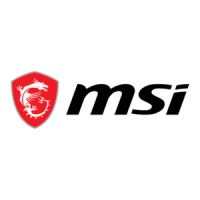
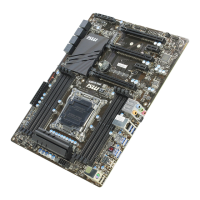

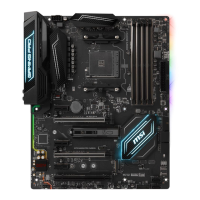
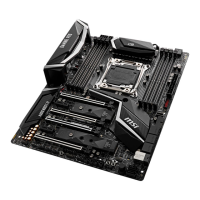
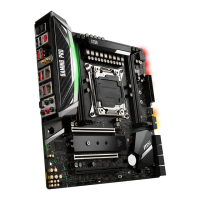
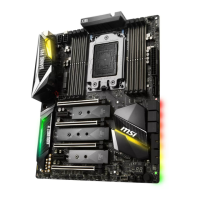

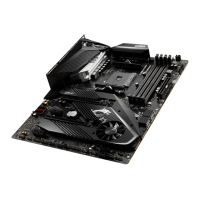
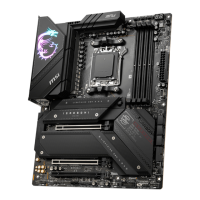
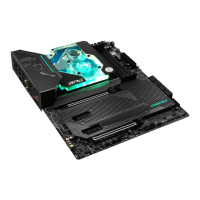
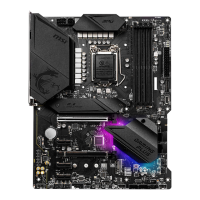
